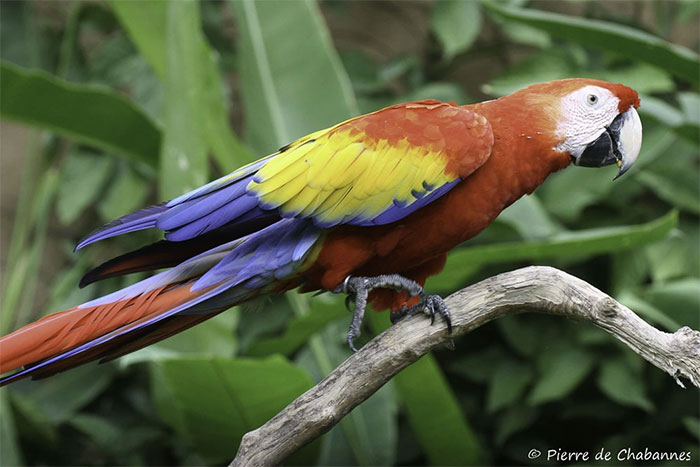Why parrots are an exception to the rule of evolution
Parrots are an exception to the evolutionary rule, as they use a completely different method to create the ability to change feather color in the same individual.
Birds are among the most brightly colored creatures in the animal kingdom. Most of them use a group of pigments called carotenoids to create the vibrant colors of their feathers, which they get from their plant-based diet.

Macaw (Ara macao) with 3 typical colors: yellow, red and blue (Photo: Getty).
However, parrots are an exception to this rule, as they have evolved a completely new way to create the ability to change feather color within the same individual.
New research published in the journal Current Biology found that the change in parrots' yellow and red feather color is linked to an enzyme called ALDH3A2.
This enzyme plays an important role in converting pigments that create red and yellow feather colors in parrots.
Specifically, the research team found that when the growing parrot feathers contain a lot of enzymes, they will be yellow. However, when the enzyme content is less, they will be red.
Scientists have also shown that in wild populations of parrots and some finches, mutations in just a few genes can significantly alter the chemical structure of pigments, creating differences in feather color.
There, just a single oxygen atom can change the course of evolution, creating a new pigment with a distinct appearance.
This claim was proven after researchers witnessed the change in feather pigmentation in parrots from red to yellow and vice versa in sparrows.
This unique evolution reminds us once again of the wonder of nature and shows that evolution is a continuous process.
There, every individual in the population contains a unique set of genes, and every small variation is the product of millions of years of past evolution.
It could also be the key to the development of a new species in the future.
- Parrots have the ability to weigh risks to make decisions
- Decipher the secret that makes parrots talk
- Strange bird colorful likes to eat clay
- Surprised by the ability of the parrot to make food
- Smart parrots like people
- Discover new parrot species in Mexico, green head 'crown'
- Shocking news: Brazil's
- Parrots help people paralyze back
- Parrots know the benefits of sharing?
- The super rare parrot is causing scientists to give up 'why is it going to go extinct'?
- Parrots are extremely intelligent species but why are they capable of that?
- Thousands of parrots invade Argentine town
 Animal 'suffering' after hibernation
Animal 'suffering' after hibernation Why do goats climb well?
Why do goats climb well? Scientists were surprised to see chimpanzees eating turtles
Scientists were surprised to see chimpanzees eating turtles Giant catfish died deadly due to drought in Thailand
Giant catfish died deadly due to drought in Thailand